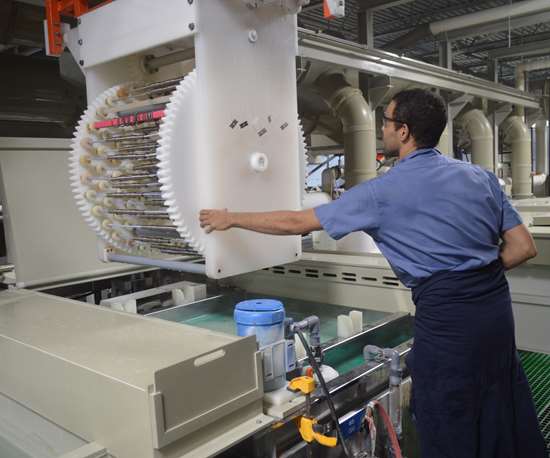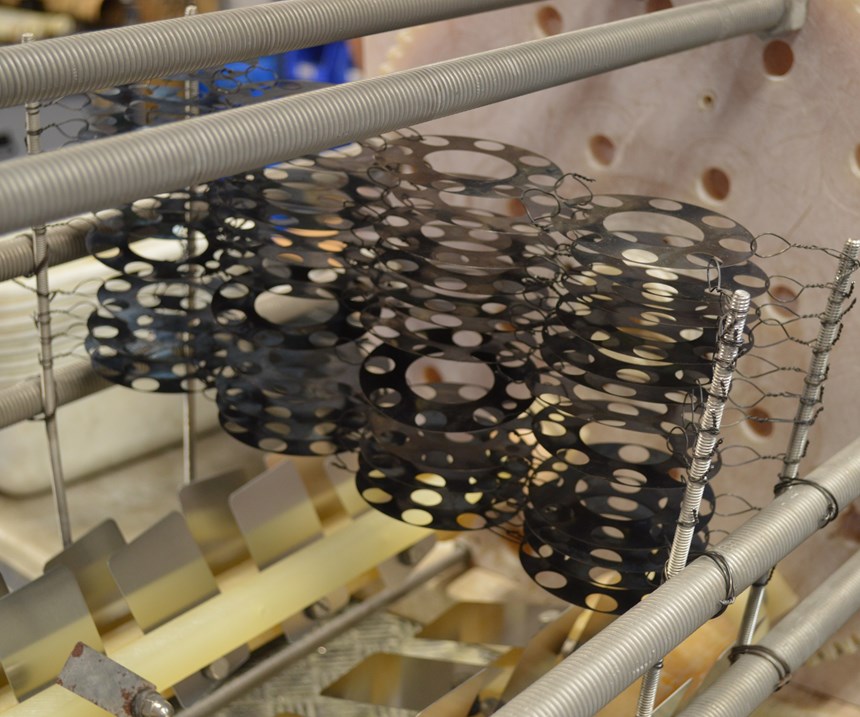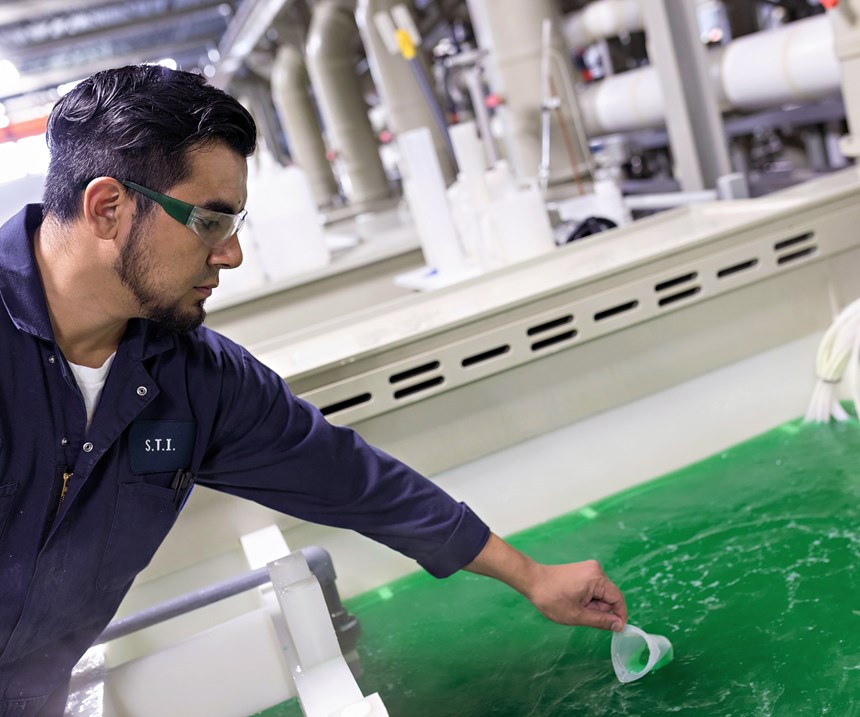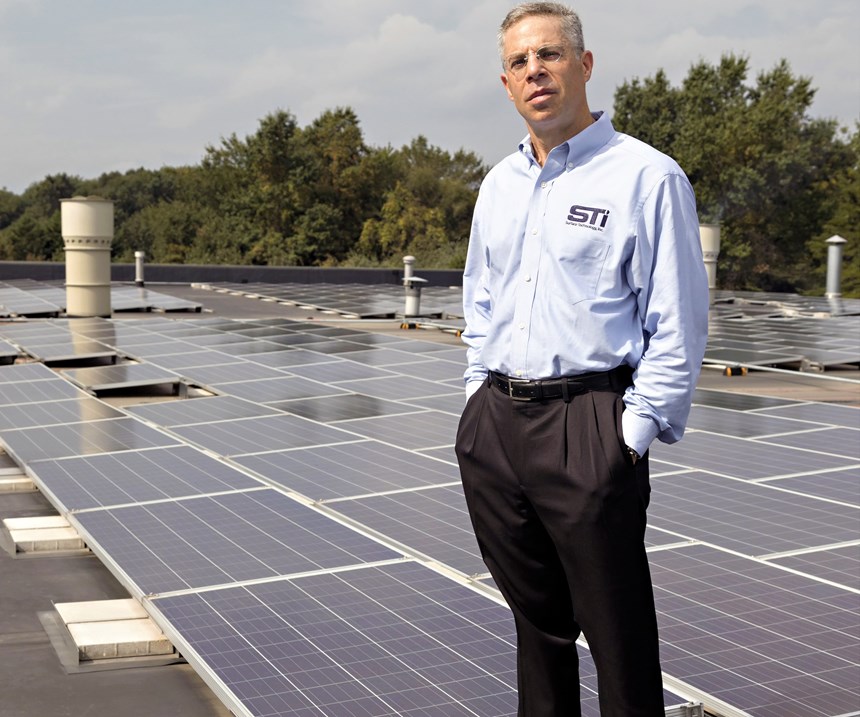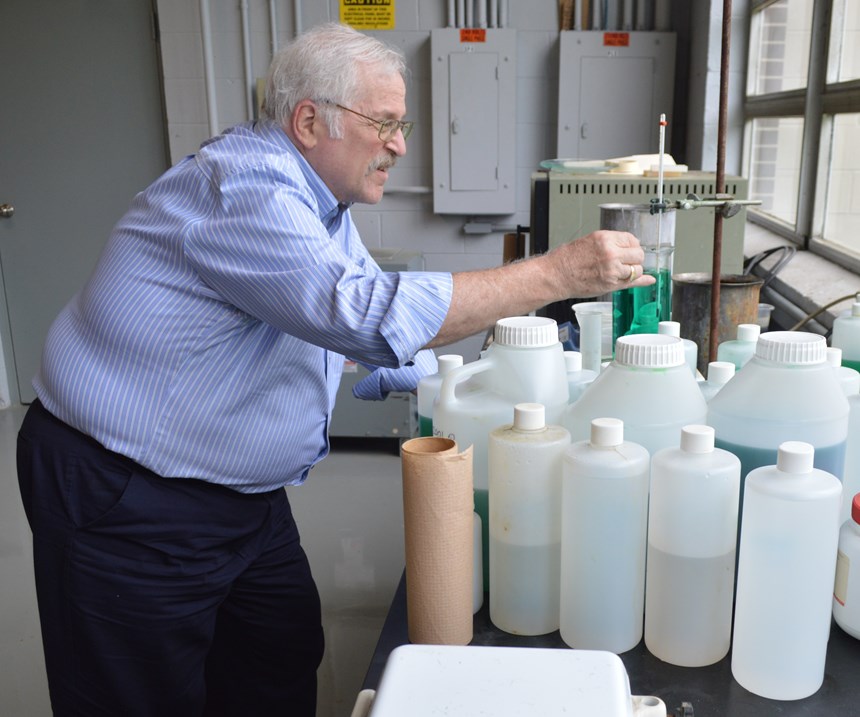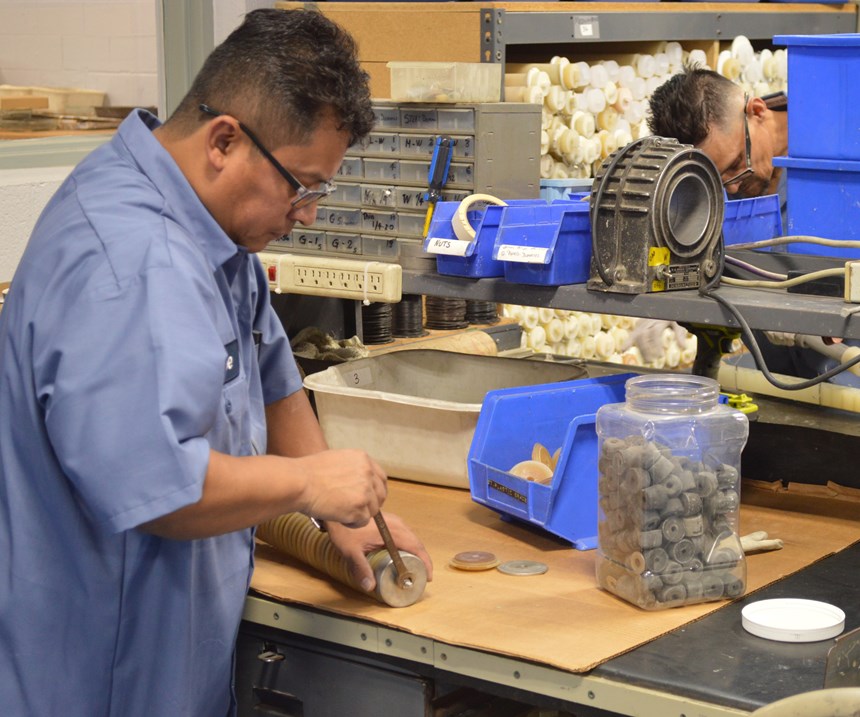When Nathan Feldstein sat his three sons down one day in 1972 and told them he was leaving his research job at RCA and starting his own finishing business, he had some caveats he wanted his offspring to keep in mind.
“Things are going to be kind of lean for a while,” Dr. Feldstein told them. “So, don’t ask your mother for new clothes, bicycles or expensive cereal.”
Featured Content
The last part—replacing Apple Jacks and Frosted Flakes with far less worthy breakfast food—was what drew the largest gasps from him and his brothers, Michael Feldstein now recalls.
“We knew it was serious when he mentioned cereal,” he says.
Dr. Feldstein’s decision to leave a lucrative position as a research scientist at RCA Laboratories’ Sarnoff Research Center to start Surface Technology Inc. in Ewing, New Jersey, was risky, to say the least, especially in the early 1970s, when the country’s economy wasn’t so bright.
But Surface Technology was established as a place of invention and ingenuity in the finishing industry and grew slowly but surely in its first decades. The company started at a booming time for plastics, especially in the aerospace and automotive markets. As manufacturers sought to replace metals with more lightweight materials, the challenge became how to get a coating on to a non-conductive substrate such as plastic; it was a challenge on which the research scientist sought to capitalize.
Licensed by IBM and Others
By 1976, Surface Technology had been awarded its first four patents. Companies such as IBM licensed many of its products, and the company began to grow more rapidly.
Dr. Feldstein passed away in 1996 at the age of 59, when he was still very much active in the finishing industry and in running his company. In recognition of his accomplishments and contributions to the industry, he was voted into the Products Finishing Hall of Fame in 2016.
His knack for ingenuity has carried over to his son Michael, who now leads Surface Technology and its growing line of products and services for the finishing industry. The company is one of the top plating operations in North America and has been named a Products Finishing Top Shop for several years.
Now in its fourth and vastly expanded facility, the company is unique in that it essentially has three separate entities: a research and development arm, manufacturing of a full line of electroless nickel solutions, and a plating job shop. Feldstein says there is a great advantage in being both a job shop and a supplier of EN solutions to other facilities.
“This synergy of operations is one of Surface Technology’s keys to success,” he says. “We use the same products on our own lines that we sell to other platers and distributors worldwide, so we are able to give our customers first-hand practical advice on the chemistry as well as all aspects of plating operations. Our goal is always to have the best-in-class electroless nickel products, and also the know-how of doing it productively, economically and consistently.”
A Completely Different Company
Feldstein says Surface Technology is a totally different company now than it was when his father ran it.
“As far as the products that we make, the industries we serve and even the distribution of how much of the business is plating shop and how much is chemical manufacturing, it is completely different,” he says.
Diversification has been a key to the company’s continued success. Half of the job shop business is from outside of the U.S., and about half of the EN solutions made by Surface Technology are exported overseas. The company has also extended its technology through license agreements to more than 40 licensees globally, which provide even more opportunities for Surface Technology to broaden its knowledge. It has more than 90 U.S. and foreign patents on its processes, and several more are pending. The company makes numerous proprietary finishing solutions, including One-Plate, AddPlate, NiPlate, NiSlip, Composite Diamond Coating, Nano-Plate, TraceCoat, ENBO, Surfcat, Promoter, Deburr 1000, Bor-Fuse and Pitless NF, which are used by facilities around the world.
The third entity within Surface Technology is its research and development activities. The laboratory in the company's Ewing, New Jersey, facility is about five times larger than the lab was in its last facility and even larger than the entire first facility the company was in 45 years ago.
Composite Diamond Coating
“We weren’t the first to think of putting diamonds into electroless nickel, but we were the first that made it commercially viable,” Feldstein says.
Surface Technology used its know-how in electroless nickel and specialty surfactants to make the coating on a commercial scale to provide additional wear resistance to objects subject to heavy abrasion. The trademarked process is called Composite Diamond Coating, or CDC, and it has been used extensively in numerous industries, including robotics, paper, molding, tool and die, plastics, textiles, packaging, petrochemicals and automotive. The company even has developed a version for the heads of golf clubs that has been proven by scientific, robotic and professional golfer methods to make the ball go about 7 percent farther. The United States Golf Association has confirmed that it conforms to the rules of golf, so it seems diamonds can be a golfer’s best friend, too.
CDC is the primary coating produced in Surface Technology’s plating shop, and it includes a wide range of versions to meet the specific needs of different industry applications. The diamond used in the coatings can be as small as nanometers to produce exceptionally smooth surfaces to much larger sizes that can make a rougher texture that providesr grip and friction.
“The rougher CDC coatings have become even more popular in recent years as robotic applications requiring precision grip surfaces continue to grow,” Feldstein says. “We see this in our job shop as well as the sales of CDC bath solutions to other plating shops.”
CDC as a replacement for hard chrome in many applications continues to be an area of growth as well.
“We focus on the Composite Diamond Coating here and other composites like Teflon and boron nitride,” Feldstein says. “When we get inquiries all the time about electroless nickel, we pass them on to one of the plating shops which is buying EN solutions from us, and say, ‘Here is a company much closer to you which has the capacity, and they can serve your EN needs even better ’ We build on those relationships which we genuinely appreciate.”
Simplicity in One-Plate
In 2017, Surface Technology rolled out what it touted as a true breakthrough in EN technology. The One-Plate process has just a single “Q component” for both makeup and replenishment instead of the typical three-component ABC systems. The company has continued to develop this unique technology by adding a high-phosphorous version to its offerings and by combining the single component technology with all varieties of composite EN plating.
“It is now possible to use the single One-Plate 1001Q solution to operate a conventional bright, mid-phos, RoHS, self-pH-regulating bath,” Feldstein says. “Or to add one of our diamond, PTFE, boron nitride or other particle dispersions to the same bath and produce a composite coating.”
There are additional benefits as well. For example, the company says the One-Plate plus polytetrafluoroethylene (PTFE) system can last for as many as nine metal turnovers, or three times the standard lifetime of conventional EN-PTFE baths.
“People get the concept of One-Plate immediately, and it truly sells itself,” Feldstein says, adding that the number of distributors and shops using One-Plate medium and high-phosphorus solutions with and without composites is increasing at an unprecedented pace, with installations up to thousands of gallons.
Green Environment
Environmental management has always been a top priority for Surface Technology, and it shows in the current facility, which uses 860 solar electric panels to power the manufacturing activities at the shop. That provides the capacity to save more than 2,300 pounds of carbon dioxide emissions every day, which Feldstein says is equivalent to planting about 75 trees. The solar panels light up all the newly installed LED lighting on motion sensors throughout the facility that shine on Surface Technology’s customized equipment, which was designed for optimal energy conservation.
“And the very nature of our products being wear resistant and/or low friction are inherently good for the environment, as they make components last longer, save on materials and reduce energy consumption,” Feldstein says.
The company founded by Dr. Feldstein more than four decades ago has changed much in how it does business today, but the spirit of its founder lives on in the staff, which is constantly looking at new ways to help its customers through invention and innovation.
“Half of our research and development is customer-driven, and the other half is coming up with new and innovative ideas for ourselves and to bring to the industry,” Michael Feldstein says.
For information, visit surfacetechnology.com.
About Nathan Feldstein
As a chemistry lecturer at Brooklyn College and the City University of New York, Nathan Feldstein became a leader in pioneering research of electroplating, electroless plating and electronic device manufacturing. He won RCA outstanding achievement awards in 1968 and 1972 for pretreatment and plating developments that enabled production of the videodisc, which the company marketed as Selectavision for many years.
Dr. Feldstein’s commitment to the surface finishing industry encompassed presenting papers and publishing research on his developments. In 1990, he authored the chapter on composite electroless plating for the book “Electroless Plating Fundamentals and Applications” published by the American Electroplaters and Surface Finishers Society. In total, Dr. Feldstein authored and presented more than 40 papers at national and international conferences, and wrote more than 50 technical papers that were published around the world. He was chairman of the Electrochemical Society national meeting symposium on electrodeposition processes in the electronics industry, and a member of several AESF committees, including its paper committee. All of this was in addition to founding Surface Technology Inc.
RELATED CONTENT
-
Blackening of Ferrous Metals
The reasons for installing an in-house cold blackening system are many and varied.
-
An Overview of Electroless Nickel Plating
By definition, electroless plating is metal deposition by a controlled chemical reaction.
-
Cleaning, Pretreatment to Meet Medical Specs ISO 13485 or FDA 21 CFR820
Maximilian Kessler from SurTec explains new practices for industrial parts cleaning, metal pretreatment and decorative electroplating in the medical device industry.



